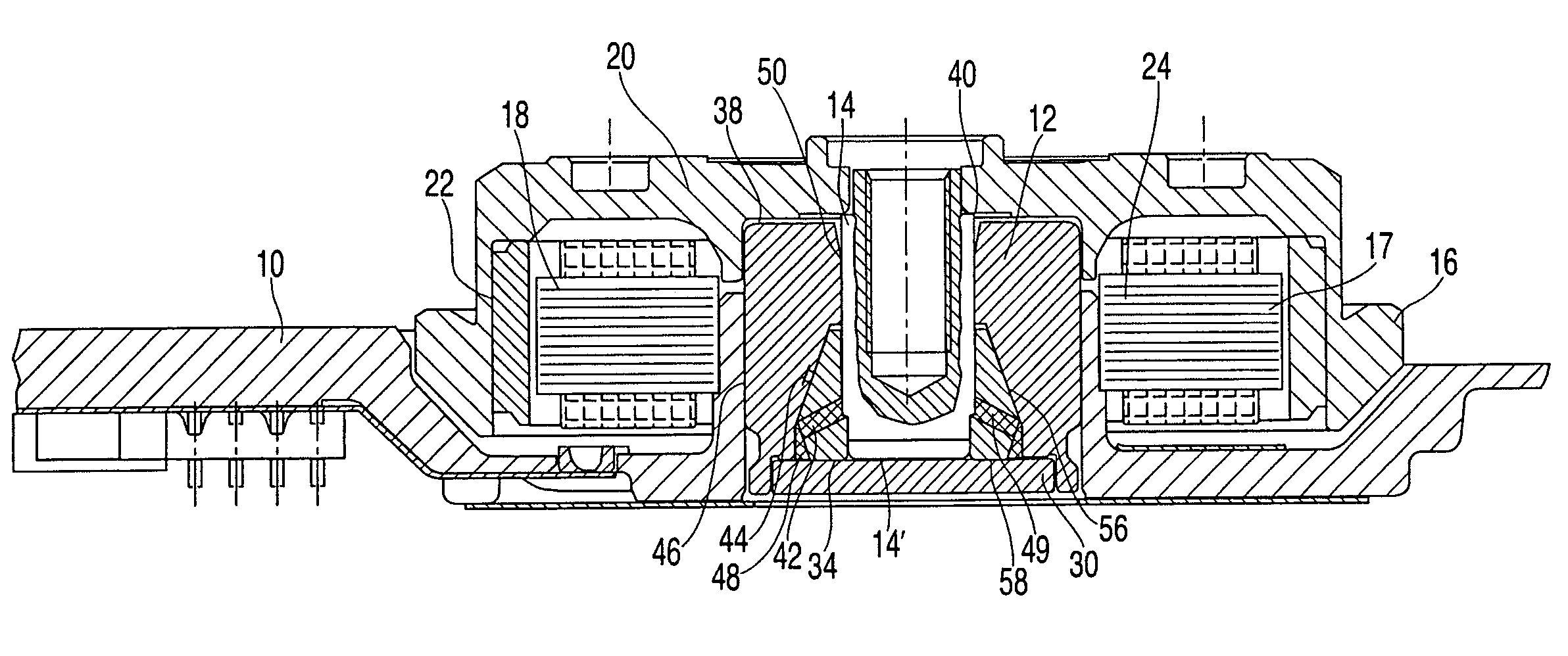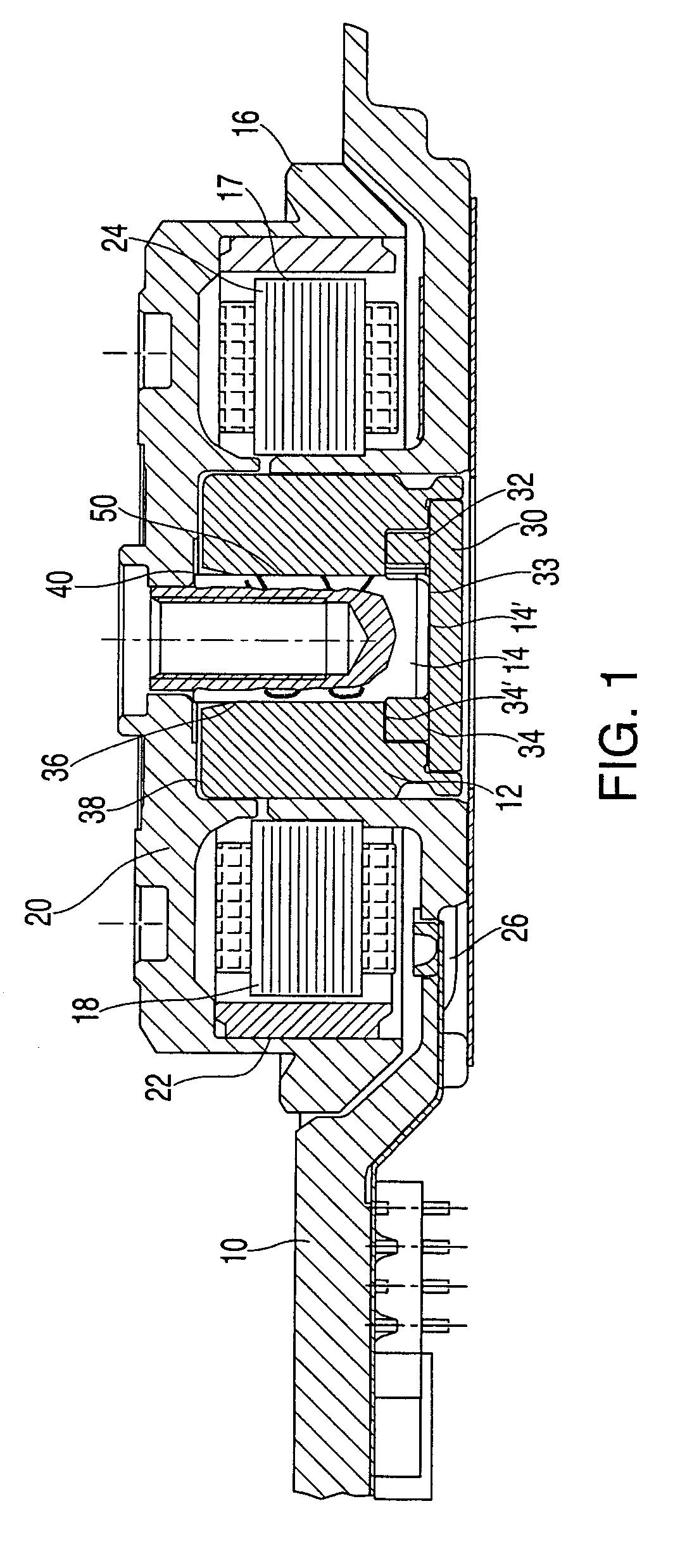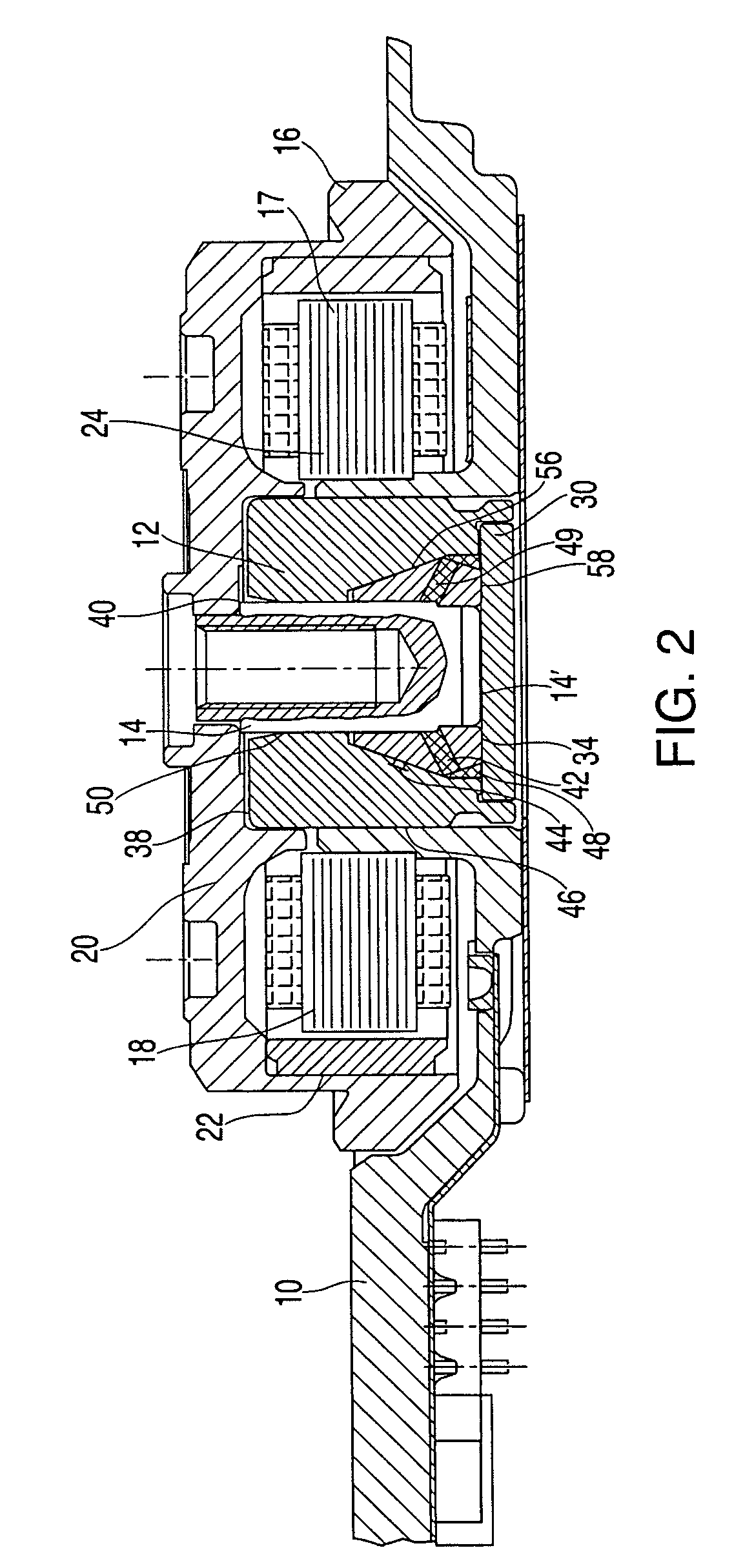Hydrodynamic bearing for a spindle motor
a technology of hydrodynamic bearing and spindle motor, which is applied in the direction of sliding contact bearing, record information storage, instruments, etc., can solve the problems of motor failure, ball bearings creating debris, mechanical friction inherent in ball bearings also generating heat, noise and vibration, etc., to reduce the overall power draw of the spindle motor, reduce the overall power loss, and the effect of high degree of effectiveness
- Summary
- Abstract
- Description
- Claims
- Application Information
AI Technical Summary
Benefits of technology
Problems solved by technology
Method used
Image
Examples
Embodiment Construction
[0027]As shown in FIG. 1, a spindle motor comprises a flange or a base plate 10 to be fastened to a disk drive (not shown). The flange 10 is fixedly secured to a bearing sleeve 12 supporting a shaft 14 for rotation. A rotor 16 is fixedly mounted on the shaft 14, in such a manner as to rotate with the shaft with respect to the flange 10 and the bearing sleeve 12. A stator 18 is fixedly connected to the flange 10.
[0028]The rotor 16 encompasses a hub 20 and the shaft 14, which is coaxially secured to the rotor hub. A rotor magnet 22 is connected to an inner peripheral wall of the rotor hub 20 by, for example, press-fitting or adhesion. The exterior of this peripheral wall of the rotor hub 20 is shaped so that it can support one or more magnetic disks (not depicted).
[0029]The stator 18 comprises a core 24 and stator coil 26 wound around the core 24. The stator 18 and rotor 16 are separated by a thin concentric gap 17, the bearing air gap.
[0030]The bearing sleeve 12 is sealed on one side...
PUM
 Login to View More
Login to View More Abstract
Description
Claims
Application Information
 Login to View More
Login to View More - R&D
- Intellectual Property
- Life Sciences
- Materials
- Tech Scout
- Unparalleled Data Quality
- Higher Quality Content
- 60% Fewer Hallucinations
Browse by: Latest US Patents, China's latest patents, Technical Efficacy Thesaurus, Application Domain, Technology Topic, Popular Technical Reports.
© 2025 PatSnap. All rights reserved.Legal|Privacy policy|Modern Slavery Act Transparency Statement|Sitemap|About US| Contact US: help@patsnap.com



